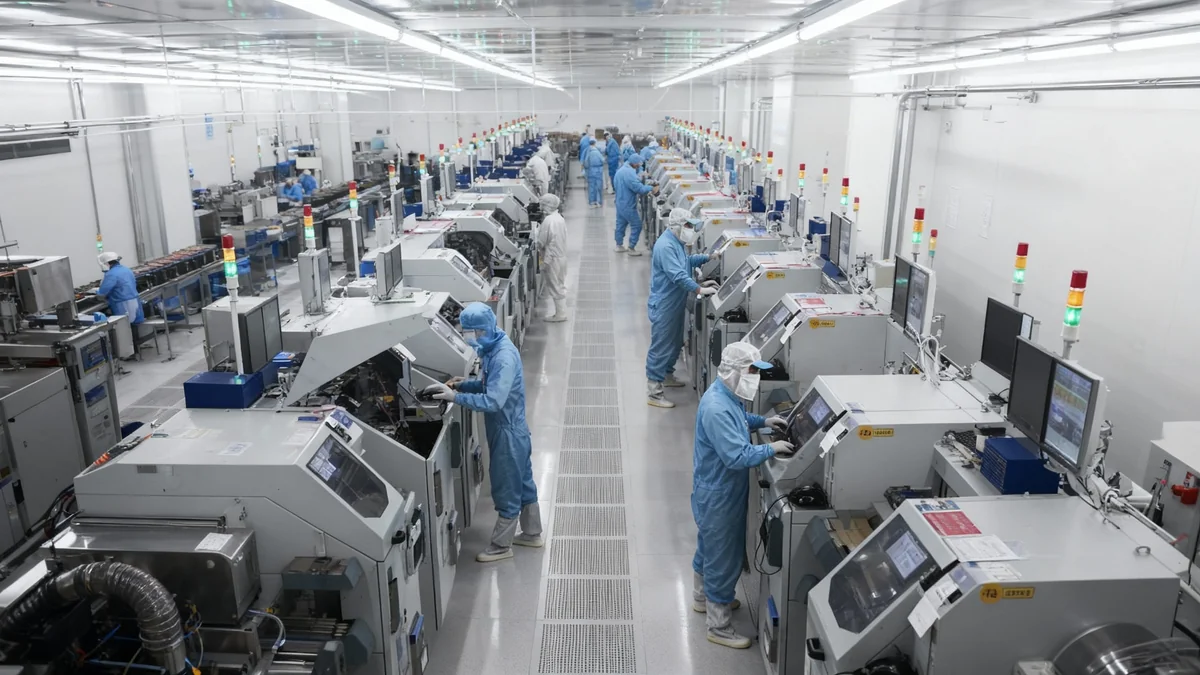Many countries are launching national artificial intelligence strategies with the goal of becoming global competitors. However, the immense capital required to build and scale AI technology is creating a significant barrier, concentrating power within a few well-funded companies primarily in the United States and creating an uneven global landscape.
Key Takeaways
- High capital requirements for AI development are pricing out smaller startups and entire nations, hindering competition.
- Emerging markets face a significant "brain drain," with over 40% of top AI talent working outside their home countries, primarily in the U.S. and China.
- Countries like the UAE are investing heavily in AI infrastructure, such as data centers, but struggle to foster local AI technology development.
- China, through companies like Huawei, is building AI infrastructure and talent pipelines in emerging markets, creating an alternative to Western-led ecosystems.
The High Cost of AI Dominance
The promise of artificial intelligence as a great equalizer is being tested by economic realities. Early-stage investment in AI startups shows signs of plateauing as companies struggle to find scalable business models that customers are willing to pay for. This challenge is magnified by the massive financial barrier to entry.
The current market leaders have raised billions of dollars, creating a cycle that reinforces their dominance. This capital allows them to generate significant revenue for infrastructure companies like Oracle and Nvidia, further solidifying their position. New startups, even those with superior technology, find it nearly impossible to compete without comparable funding.
Projected Market Growth
The global AI infrastructure market is on a rapid growth trajectory, estimated to reach $200 billion in annual spending by 2028. This highlights the immense financial resources required to compete in the sector.
This concentration of capital threatens to stifle broader innovation, leaving most countries and their entrepreneurs on the sidelines. The result is an AI landscape heavily dominated by a handful of players, primarily located in the United States.
National Investment Meets Global Reality
Several nations have announced ambitious plans to become leaders in AI, but these strategies often collide with the realities of a market controlled by established giants. These initiatives highlight a common pattern: success in building infrastructure does not always translate to homegrown innovation.
The UAE's Infrastructure-First Approach
The United Arab Emirates has positioned itself as a future global AI leader with a $10 billion commitment to the sector. A significant portion of this investment is directed toward constructing data centers through public-private funds like G42 and Khazna. These efforts include subsidizing local facilities for major tech companies such as Nvidia and Huawei.
Despite this massive investment in physical infrastructure, the UAE has yet to produce locally developed AI technologies or startups capable of competing on a global scale. The focus remains on building the foundation rather than the technology that runs on it.
Argentina's Stalled Ambitions
In 2023, Argentina announced a major initiative to become an AI "superpower." The plan attracted some foreign investment, including a notable $500 million commitment from Salesforce. However, the strategy lacked critical components for long-term success.
The government did not establish significant research programs or create sufficient incentives to retain its domestic AI talent. This failure to build a supportive ecosystem has limited the impact of its initial ambitions, leaving the country struggling to gain traction.
The Global Talent Migration
The challenge of retaining talent is a global issue, particularly for developing nations. A report from the Chicago-based Paulson Institute found that more than 40% of the world's top-tier AI talent consists of foreign nationals working in a different country. This phenomenon, often called "brain drain," sees skilled researchers and engineers from countries like Nigeria, India, and Brazil recruited to the U.S., Europe, and China, where funding and opportunities are more plentiful.
Bridging the Digital Commerce Gap
For national strategies to succeed, they must focus on more than just infrastructure. According to Vinod Sivagnanam, a senior technology leader with experience at Adobe and Amazon, the key is enabling local businesses to compete globally.
"If we are to truly expand access to global commerce, we need to create an inclusive digital infrastructure that allows businesses and customers to engage in cross-border commerce. That includes reducing barriers for merchants to enter new markets and for customers to access a truly global set of products."
Sivagnanam emphasizes the need for practical tools that help local companies scale. He states that nations should invest, through the private sector, in solutions that simplify complex processes and allow startups to adapt quickly to global market changes, such as international tariffs.
China's Growing Influence in Emerging Markets
As Western markets become more restrictive, some Chinese technology companies are turning their focus to emerging economies. Huawei, which has faced significant limitations in the United States and Europe, is actively building partnerships across Asia, Africa, and Latin America.
With support from the Chinese government, Huawei has been instrumental in developing critical infrastructure, including:
- A government data center in Algeria
- Managed cloud services in the Philippines and Egypt
- Technology initiatives in Nigeria, Nicaragua, Nepal, and Pakistan
Beyond providing business services, Huawei is also investing in human capital. The company funds programs at local universities to train a new generation of tech talent, which it can then hire. This strategy creates a self-sustaining ecosystem that ties these markets closer to China's technology sphere.
Upcoming Hurdles for the Global AI Industry
The next 18 months are expected to be a critical period in shaping the future of the AI industry. Several factors could determine whether the market becomes more concentrated or if new opportunities for competition emerge.
Startups outside the United States will likely continue to face challenges securing later-stage financing. Furthermore, rising national security concerns and protectionist policies may limit access to essential data centers. Finally, the outcome of major legal cases, such as the lawsuit filed by The New York Times against Microsoft and OpenAI, could set new precedents for data access, potentially limiting the content available to smaller AI startups for training their models.
These pressures may force significant changes in AI business models or further entrench the dominance of the current market leaders.





